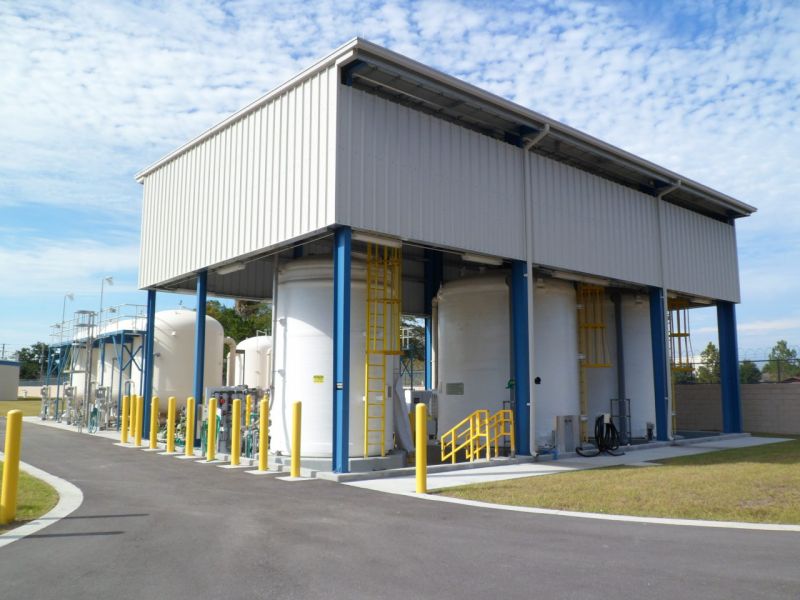Florida County Treats Disinfection By-products with Ion Exchange Treatment (Case Study)
Published on by Water Network Research, Official research team of The Water Network in Case Studies
The construction of a new well prompted the need for Seminole County, Florida to address hydrogen sulfide regulations by the Florida Department of Environmental Protection.

Image source: US Water Service
Struggling with disinfection byproducts resulting from Total Organic Carbon (TOC) and bromide in the water, the county began utilizing ozone oxidation to address the hydrogen sulfide and reduce disinfection by-product through a pilot study. Pilot testing confirmed the success of this treatment method and ion exchange treatment was recommended for the treatment of TOC. Seminole County partnered with Tonka Water, a U.S. Water Brand to develop an innovative system, which uses anion exchange to treat groundwater.
Seminole County Utilities chose a Tonka Water, a U.S. Water Brand (Tonka Water) Organix™ ion exchange treatment system to address TOC. The treatment process consists of six 12’ diameter ion exchange vessels containing anion exchange resin and support gravel. Water is pumped directly from the wells through the Organix ion exchange system to storage and the distribution system.
Tonka Water's considerable experience with ion exchange treatment technology allowed for a fully optimized system where resin capacity is closely matched with the control of bringing and regeneration of the media. This allows for the reduction of brine waste and backwash water. With easy integration into existing facilities for both ground and surface water treatment, Organix is ideal for TOC, Dissolved Organic Carbon (DOC), and color removal. With no moving parts, it is easy to operate and maintain consistent water quality. Additional features include intermittent or continuous operation, adaptation for seasonal use and SCADA compatibility. Organix is a cost-effective and user-friendly solution to the complex challenge of organics removal.
The Seminole County plant is meeting expectations since its commissioning in 2014. Tonka Water is proud to have assisted the community in achieving its treatment goals.
Source: US Water Service
Media
Taxonomy
- Treatment
- Oxidation
- Ion Exchange
- Ozonation
- Polluted Water Oxidation
- Purification
- Ozone
- Disinfection
1 Comment
-
Water treatment plants tend with mechanical technology solutions, such as RO and others. Actually there is another (natural) approach, where the obstacles faced by mechanical installations can be reduced, chemical usage can be significantly reduced. I have over the past 10 years implemented a more natural installation of WTP and WWTP, thereby increasing efficiency in reducing space, time and costs. Even with engineering minerals can remove heavy metals such as pesticides and others. With a simple installation, in Kendari - Indonesia I have transformed city river water into drinking water free of mokroorganisme and carcasses, free of heavy metal pesticides and others. Why can't clean water reservoirs maintain the quality of clean water in a certain time? the answer is that there are still carcasses of organisms in the clean water, and the completion of the water treatment in the chemical context, where chloramine appears, and so on. (see me on LinkedId)